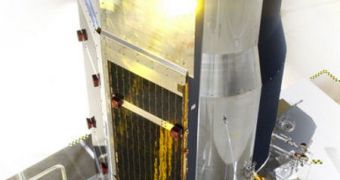Astronomers are now convinced that the Milky Way and Andromeda galaxies will collide with each other in about 5 billion years. In order to understand what the result of this event will look like, experts now investigate the processes that take place during galactic mergers elsewhere in space.
Given the massive sizes of both galaxies, it stands to reason that the collision will be massive, and the damage brought to both objects beyond words. The gravitational and tidal forces alone will most likely deform and eventually rip both galaxies apart.
The spiral arms will be the first to make contact, followed slowly by the central bulges. Eventually, even the supermassive black holes powering up both galaxies will become one. The alternative scenario is one in which one of the dark behemoth is cast out.
In the end, millions of years after the collisions begin, the two galaxies would become one. The object would be massive, but many of the star systems that exist today will most likely be destroyed.
At the same time, the violent interactions will make hydrogen gas reserves in both galaxies come back to life, and begin producing young, blue stars at a frantic pace. The Milky Way produces very few new stars on account of its age, and Andromeda doesn't fare any better in this regard.
Using data from two observatories – which imaged numerous colliding galaxies at different stages of merger – a team of investigators now believes it has the data necessary to create projections of how the resulting galaxy would look like.
“We've assembled an atlas of galactic 'train wrecks' from start to finish. This atlas is the first step in reading the story of how galaxies form, grow, and evolve,” explained Harvard-Smithsonian Center for Astrophysics (CfA) astronomer and lead study author Lauranne Lanz.
The investigator presented details of her discoveries during a press conference held yesterday, May 25, in Boston, at the 218th meeting of the American Astronomical Society (AAS 2011). Her team used the NASA Galaxy Evolution Explorer (GALEX) and the Spitzer Space Telescope for the study.
While the former investigates the Universe in ultraviolet radiation, Spitzer conducts its research in infrared wavelengths. This multi-spectral analysis allows a much deeper insight into galactic mergers than simply looking at the events in the visible-light portion of the electromagnetic spectrum.
“We're working with the theorists to give our understanding a reality check. Our understanding will really be tested in five billion years, when the Milky Way experiences its own collision,” Lanz told attendants at the conference, as quoted by SpaecRef.

 14 DAY TRIAL //
14 DAY TRIAL //